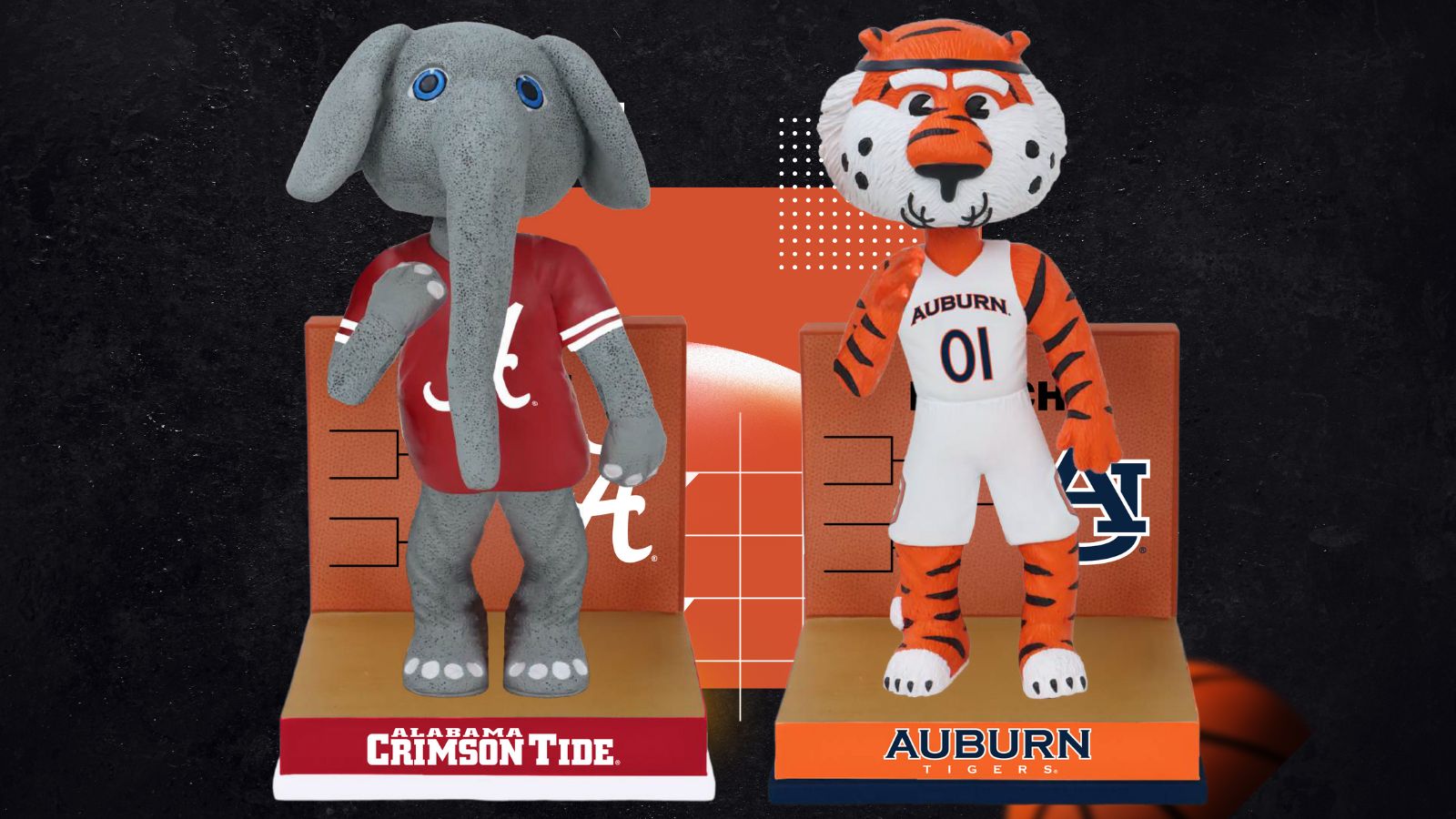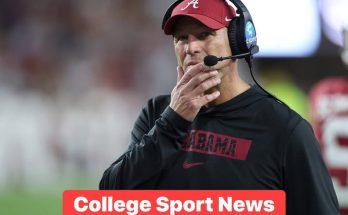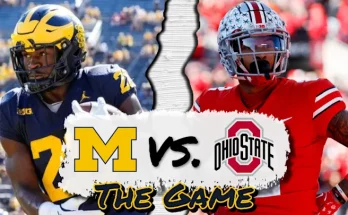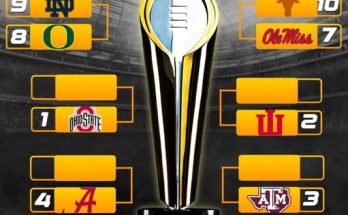Alabama and Auburn basketball ‘Dancing in March’ bobbleheads score in Sweet 16 unveiling
To celebrate Alabama and Auburn’s upcoming Sweet 16 appearances this week, the National Bobblehead Hall of Fame and Museum unveiled Alabama Crimson Tide and Auburn Tigers Dancing in March Bobbleheads. The No. 1 seed Auburn faces Michigan on Friday in the Sweet 16, and Alabama will take on BYU on Thursday.
In the world of college basketball, March is synonymous with the excitement, intensity, and unpredictability of the NCAA Tournament. It’s the time of year when “Cinderella stories” are born, and fanbases rally around their teams in an effort to witness history. For the state of Alabama, this March Madness season was particularly special. As both the Alabama Crimson Tide and Auburn Tigers made deep runs into the tournament, something even more exciting emerged to complement their thrilling performances: the unveiling of the “Dancing in March” bobbleheads.
These collectible items, designed to capture the essence of March Madness and the pride of Alabama’s two powerhouse basketball programs, quickly became a hot commodity, combining fan passion with the inherent charm of college basketball. The release of these bobbleheads coincided with both teams’ exciting progress into the Sweet 16, making them a perfect symbol of the state’s basketball prowess and its fanbase’s collective enthusiasm.
A Historic March for Alabama and Auburn Basketball
Before diving into the significance of the bobbleheads themselves, it’s essential to understand just how monumental this NCAA Tournament run was for both Alabama and Auburn. As the two leading college basketball programs in the state of Alabama, their success in March Madness not only stoked rivalry flames but also brought a new level of excitement to the state’s sports culture.
Alabama: A Championship-Caliber Team
Alabama’s basketball program entered the 2025 NCAA Tournament as one of the most formidable teams in the country. Under head coach Nate Oats, the Crimson Tide had built a roster that was both deep and talented. With a mix of elite shooters, dynamic playmakers, and a rock-solid defense, Alabama had already been a dominant force in the SEC (Southeastern Conference) and was poised for a deep run in the tournament.
The team’s success was largely driven by their standout player, Brandon Miller, whose skill set and leadership were key factors in Alabama’s dominant performances. Alabama’s journey to the Sweet 16 had been marked by thrilling victories over tough opponents, with Miller and his teammates showing their resilience and ability to rise to the occasion. As the Crimson Tide marched forward, their fanbase grew increasingly hopeful of a potential championship, and the state of Alabama was buzzing with excitement.
Auburn: The Resilient Underdog
Auburn, on the other hand, came into the tournament as a team that had faced some ups and downs during the regular season. However, they had earned their place in the Sweet 16 with impressive performances and solid play. Under head coach Bruce Pearl, Auburn’s program had become known for its tenacity, physicality, and fierce defense. Pearl’s ability to get the most out of his players was evident, and as Auburn advanced through the tournament, the Tigers became a darling of the March Madness crowd.
The team had several players who contributed to their success, including star guard Wendell Green Jr. and forward Jaylin Williams. Their grit and never-say-die attitude were a perfect embodiment of the Auburn basketball program’s identity. For many fans, Auburn’s run through the tournament felt like a classic underdog story, and they were quickly becoming a favorite to make a deeper push toward the Final Four.
As both teams made their way into the Sweet 16, it became clear that Alabama and Auburn were not just competing for themselves but were representing the entire state of Alabama. The buzz surrounding their performances transcended rivalries, as fans across the state celebrated their respective teams’ success. It was in this atmosphere of excitement and unity that the “Dancing in March” bobblehead collection was unveiled.
The “Dancing in March” Bobblehead Collection: A Nod to Alabama’s Hoops Culture
The concept of the “Dancing in March” bobbleheads was an idea that had been in the works for months leading up to the NCAA Tournament. The creators behind the bobbleheads wanted to capitalize on the energy and excitement that March Madness brings, and what better way to do so than by creating a keepsake that represented the passion of Alabama’s two biggest basketball programs?
The bobbleheads, which featured a stylized design of the most recognizable elements of the tournament, were meant to capture the essence of March Madness — the unpredictable, exhilarating ride that fans take with their teams as they move through the rounds. The bobbleheads depicted iconic moments in the tournament, such as players celebrating after big shots, coaches urging their teams forward, and fans cheering from the stands. But what set the Alabama and Auburn versions apart was their incorporation of elements that were distinctly tied to the state.
Alabama’s Bobblehead: The Crimson Tide Charge
The Alabama Crimson Tide bobblehead featured a dynamic representation of a player mid-celebration, with Brandon Miller’s likeness prominently featured as he raised his arms triumphantly following a buzzer-beater or game-winning play. The player’s uniform was adorned in Alabama’s signature crimson and white, and his stance was one of uncontainable joy, perfectly embodying the spirit of March Madness.
Surrounding the figure was a decorative base that showcased the Alabama “A” logo in bold, front-and-center. This design choice symbolized the pride of the Crimson Tide fanbase, which had rallied behind their team as they advanced deeper into the tournament. The bobblehead’s base was also detailed with basketballs, nets, and other elements that represented the team’s passion for their sport.
The release of this particular bobblehead coincided with Alabama’s emergence as one of the favorites to win the national championship. As their tournament run continued, the bobblehead quickly became a must-have for Alabama basketball fans, who saw it as a way to commemorate their team’s historic season. It was a symbol not just of the team’s success but also of the hope and optimism that permeated the Crimson Tide community.
Auburn’s Bobblehead: A Tiger’s Roar
For Auburn, the bobblehead took a slightly different approach. The design captured the essence of Auburn’s scrappy, hard-nosed style of play. Featuring a stylized version of Wendell Green Jr. in mid-air, the bobblehead captured a moment of athletic grace with a hard-fought dunk, representing the grit and tenacity that Auburn basketball is known for. The figure was adorned in the Tigers’ signature navy and orange colors, and the base of the bobblehead proudly displayed the Auburn logo, set against a backdrop of roaring fans.
What made this bobblehead particularly special was the detailed design work that highlighted Auburn’s famous “War Eagle” chant, with a miniature eagle perched atop the base. This subtle addition gave the bobblehead a sense of pride that reflected Auburn’s unique identity in college basketball. Fans instantly connected with the design, as it celebrated the program’s never-give-up attitude and the emotional connection that Auburn supporters have with their team.
The unveiling of Auburn’s bobblehead came at a time when the Tigers were making their own deep run through the tournament. As Auburn continued to defy expectations and advance through the bracket, fans eagerly snatched up these collectibles to show their support for their underdog team. The bobblehead quickly became a rallying point for Auburn fans, who celebrated every victory with pride and anticipation for the next game.
The Fan Response: Collectors and Enthusiasts
For fans in Alabama, the “Dancing in March” bobbleheads represented much more than just a keepsake; they symbolized a sense of pride, connection, and celebration. As Alabama and Auburn advanced into the Sweet 16, the competition between the two programs reached a fever pitch. Fans from both schools eagerly shared images of their bobbleheads on social media, showing off their collections and rallying around their teams.
The bobbleheads became a must-have item for die-hard supporters of both schools, and the demand was high. For collectors, these bobbleheads weren’t just limited to one tournament run—they were pieces of memorabilia that would stand the test of time, representing a pivotal moment in the history of both Alabama and Auburn basketball.
The rivalry between Alabama and Auburn is one of the most intense in college sports, and this was reflected in the way fans reacted to the bobbleheads. While some fans jokingly debated over which team’s bobblehead was more impressive, the unveiling of these collectibles highlighted the unique culture of college basketball in Alabama—one defined by passionate fanbases, unrelenting support, and the pride of representing their teams on the national stage.
A Sweet 16 Moment: Dancing in March Together
As both Alabama and Auburn continued their respective journeys in the tournament, the “Dancing in March” bobbleheads became more than just collectible items; they became a representation of the unity and pride of the state of Alabama. While the Crimson Tide and Tigers competed on the court, their shared celebration off the court highlighted the mutual respect between the fanbases.
The unveiling of these bobbleheads during the Sweet 16 was a moment of celebration, as fans of both teams came together to enjoy a once-in-a-lifetime experience of shared success. The fact that both teams had made it to this point in the tournament, alongside the release of these iconic collectibles, solidified the 2025 NCAA Tournament as one of the most memorable in Alabama basketball history.
As the tournament continued and Alabama and Auburn battled for the ultimate prize, fans and collectors alike knew that the “Dancing in March” bobbleheads would forever be a cherished reminder of the magic of March Madness in Alabama, a time when the state’s two basketball programs danced together toward basketball glory.



